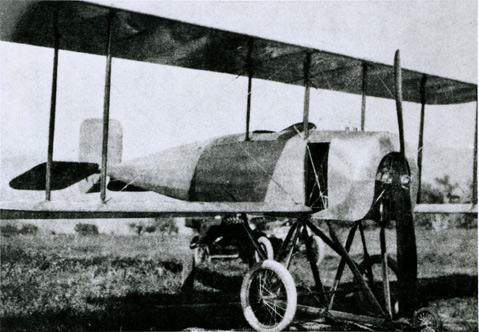Santa Barbara’s Aviation History
Early Flights Involved Stunts and Daring

Almost exactly eight years after the Wright Brothers took to the skies at Kitty Hawk, North Carolina, the first powered flight occurred over the Santa Barbara area — January 1, 1911.
In December 1910, arrangements were made to bring a daring French flyer, Dadier Masson, to Santa Barbara. One of the primary backers behind the venture was Milo Potter, owner of the fabulous Potter Hotel. A makeshift airfield was put down out in Hope Ranch near the Potter Country Club, now La Cumbre Golf and Country Club.
Masson flew a Farnham-Curtiss biplane, a pusher-type machine that had its 80-horsepower engine in the back and the pilot’s seat in front of the wings. This model at the time held the American record for the number of passengers taken aloft in one flight — four.
Masson was internationally known, having circled both the Eiffel Tower and the Statue of Liberty. He was especially famed for a stunt he called the “glide of death.” Twice on January 1, 1911, he took flight out over the Goleta Valley to the delight of onlookers, but he saved his best for the following day.
After a short test flight in the morning, he adjusted the weights on the plane and drained some gasoline from the tank to lighten the load. Upon taking off he reached an altitude of 3,000 feet as he made for the Santa Ynez Mountains before returning to Hope Ranch. He then prepared for his final flight of the day.
This time he flew along the coast, headed for the Potter Hotel. He began a gradual descent toward the hotel as observers craned their necks skyward. Masson circled the hotel, skimming only 15 feet above the towers and “buzzing” the excited spectators on the roof garden. He then brought the plane down on the grounds in front of the hotel, dragging his feet to help brake the machine.
Around 1,000 well-wishers rushed to congratulate him, among them a young John K. Northrop, who would go on to make aviation history of his own. Masson was fêted that evening at a dinner at the hotel and at a concert at the Potter Theatre. He left the next day with $1,600 in his pocket and a new suit of clothes.
Masson went on to fly under the command of General John Pershing during the punitive campaign by the U.S. against Pancho Villa in Mexico, and he then returned to France to fly for his homeland during World War I.
In March 1914, stunt pilot Lincoln Beachey took the controls of a new machine designed by famed aviator Glenn Martin. Spectators who trooped out to the Hope Ranch airfield were charged one dollar to see Beachey pilot this aircraft for the first time — a challenge because of the gyroscopic effects of the craft’s rotary engine. When Beachey attempted his famous loop-the-loop maneuver, he lost control and plummeted to earth, slamming into an oak tree.
Fortunately, Beachey emerged with but a bloody nose. Despite the mishap, Martin praised Beachey’s “bird sense” while giving the crowd “one of the greatest thrills” with his “aerial hieroglyphics.” Beachey would not be so lucky the next year; a plunge into San Francisco Bay would bring his life to an untimely end.
The story of local aviation would later include the likes of Northrop, the Loughead brothers (later changed to Lockheed), and Earle Ovington, the first U.S. airmail pilot, who would open an airfield here. A rich history, indeed.



